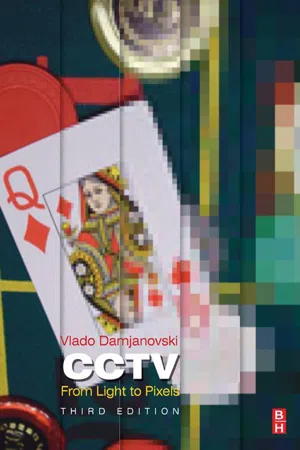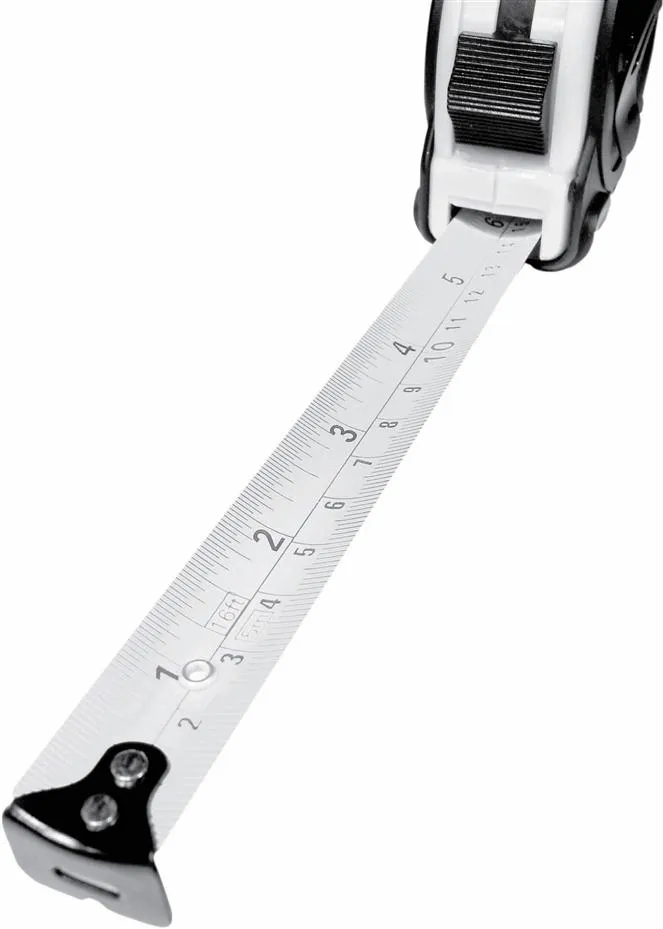
eBook - ePub
CCTV
From Light to Pixels
Vlado Damjanovski
This is a test
- 616 pagine
- English
- ePUB (disponibile sull'app)
- Disponibile su iOS e Android
eBook - ePub
CCTV
From Light to Pixels
Vlado Damjanovski
Dettagli del libro
Anteprima del libro
Indice dei contenuti
Citazioni
Informazioni sul libro
The new edition of CCTV, a high-level professional reference, is expanded to cover all video compression techniques used in the ever-increasing assortment of digital video recorders (DVRs) available on the market today. In addition to demystifying DVR technology, the third edition also clarifies the technology of data networking and explains various compression techniques. Along with all this, the book retains the particulars that made the previous editions convenient and valuable, including details of CCD cameras, lenses, coaxial cables, fiber-optics, and system design.
- Updated to address digital techniques, networking, and the Internet in closed-circuit television
- Includes brand new sections on CCTV networking, digital video recorders (DVRs), various video compression techniques, and understanding pixels and digital image quality
- Fully illustrated with dozens of photographs, tables, checklists, charts, diagrams, and instructions
Domande frequenti
Come faccio ad annullare l'abbonamento?
È semplicissimo: basta accedere alla sezione Account nelle Impostazioni e cliccare su "Annulla abbonamento". Dopo la cancellazione, l'abbonamento rimarrà attivo per il periodo rimanente già pagato. Per maggiori informazioni, clicca qui
È possibile scaricare libri? Se sì, come?
Al momento è possibile scaricare tramite l'app tutti i nostri libri ePub mobile-friendly. Anche la maggior parte dei nostri PDF è scaricabile e stiamo lavorando per rendere disponibile quanto prima il download di tutti gli altri file. Per maggiori informazioni, clicca qui
Che differenza c'è tra i piani?
Entrambi i piani ti danno accesso illimitato alla libreria e a tutte le funzionalità di Perlego. Le uniche differenze sono il prezzo e il periodo di abbonamento: con il piano annuale risparmierai circa il 30% rispetto a 12 rate con quello mensile.
Cos'è Perlego?
Perlego è un servizio di abbonamento a testi accademici, che ti permette di accedere a un'intera libreria online a un prezzo inferiore rispetto a quello che pagheresti per acquistare un singolo libro al mese. Con oltre 1 milione di testi suddivisi in più di 1.000 categorie, troverai sicuramente ciò che fa per te! Per maggiori informazioni, clicca qui.
Perlego supporta la sintesi vocale?
Cerca l'icona Sintesi vocale nel prossimo libro che leggerai per verificare se è possibile riprodurre l'audio. Questo strumento permette di leggere il testo a voce alta, evidenziandolo man mano che la lettura procede. Puoi aumentare o diminuire la velocità della sintesi vocale, oppure sospendere la riproduzione. Per maggiori informazioni, clicca qui.
CCTV è disponibile online in formato PDF/ePub?
Sì, puoi accedere a CCTV di Vlado Damjanovski in formato PDF e/o ePub, così come ad altri libri molto apprezzati nelle sezioni relative a Computer Science e Computer Vision & Pattern Recognition. Scopri oltre 1 milione di libri disponibili nel nostro catalogo.
Informazioni
1
SI Units of Measurement
Abstract
The Laws of Physics are expressions of fundamental relationships between certain physical quantities. Measurements are made by comparing the magnitude of a quantity with that of a given unit of that quantity. In physics, which Electronics and Television are a part of, the International system of units, known as SI (from the French SystèmeInternationale), is used.
Key Words
basic unit; derived unit; International system of units; metric prefix

The basic units
The laws of physics are expressions of fundamental relationships between certain physical quantities.
There are many different quantities in physics. In order to simplify measurement and to comply with the theory of physics, some of them are taken as basic quantities, while all others are derived from those basic ones.
Measurements are made by comparing the magnitude of a quantity with that of a given unit of that quantity.
In physics, of which electronics and television are a part, the International System of Units, known as SI (from the French Système Internationale), is used.
The following are the seven basic units:
| Unit | Symbol | Measures |
| Meter | [m] | length |
| Kilogram | [kg] | mass |
| Second | [s] | time |
| Ampere | [A] | electric current |
| Kelvin | [K] | temperature |
| Candela | [cd] | luminous intensity |
| Mole | [mol] | amount of substance |
These basic units are defined by internationally recognized standards.
The standard for meter, for example, was defined as a certain number of wavelengths of a specific radiation in the spectrum of krypton until 1983. In October 1983 it was redefined as the distance that light travels in vacuum during a time of 1/299,792,458 second.
The standard of kilogram, for example, is the mass of a particular piece of platinum-iridium alloy cylinder kept at the International Bureau of Weights and Measurements in Sèvres, France.
The basic unit of time, the second, was defined in 1967, as a “time required for a Cesium-133 atom to undergo 9,192,631,770 vibrations.”
Kelvin degrees have the same scale division as Celsius degrees, only that the starting point of 0° K is equivalent to − 273° C; this is called the absolute zero.
All other units in physics are defined with some combination of the above-mentioned basic units. For example, an area of a block of land is defined by the equation:

where a is the width of the block of land, and b is the length. If both a and b are expressed in meters [m], the product P will be expressed in [m2]. We should mention that in mathematics the multiplication is not always represented with the × sign as above, but very often a dot • is used in between the factors being multiplied, or sometimes even without a symbol at all.
We all know that speed, for example, is defined as [m/s], although we quite often use [km/h]. We can easily convert [km/h] into [m/s] by knowing ...
Indice dei contenuti
- Cover image
- Title page
- Table of Contents
- Copyright
- Preface to this edition
- Introduction
- 1. SI Units of Measurement
- 2. Light and Television
- 3. Optics in CCTV
- 4. General About TV Systems
- 5. CCTV Cameras
- 6. Displays
- 7. Analog Video Processing
- 8. Digital CCTV
- 9. Video Management Systems
- 10. Transmission Media
- 11. Networking in CCTV
- 12. Auxiliary Equipment in CCTV
- 13. CCTV System Design
- 14. Video Testing
- Appendix A
- Appendix B
- Appendix C
- Appendix D
- Index
Stili delle citazioni per CCTV
APA 6 Citation
Damjanovski, V. (2013). CCTV (3rd ed.). Elsevier Science. Retrieved from https://www.perlego.com/book/1831366/cctv-from-light-to-pixels-pdf (Original work published 2013)
Chicago Citation
Damjanovski, Vlado. (2013) 2013. CCTV. 3rd ed. Elsevier Science. https://www.perlego.com/book/1831366/cctv-from-light-to-pixels-pdf.
Harvard Citation
Damjanovski, V. (2013) CCTV. 3rd edn. Elsevier Science. Available at: https://www.perlego.com/book/1831366/cctv-from-light-to-pixels-pdf (Accessed: 15 October 2022).
MLA 7 Citation
Damjanovski, Vlado. CCTV. 3rd ed. Elsevier Science, 2013. Web. 15 Oct. 2022.